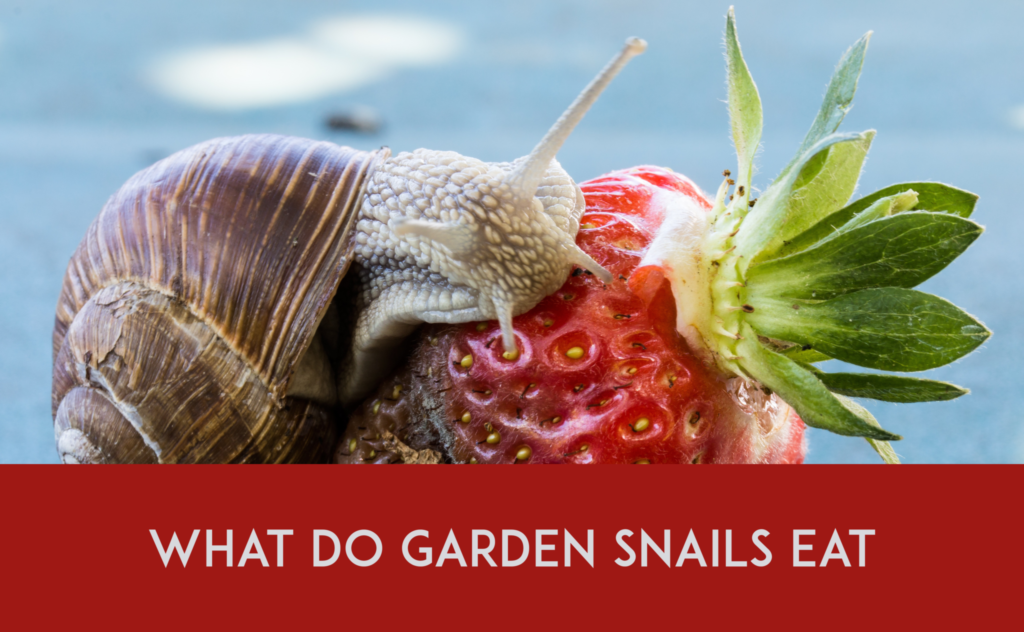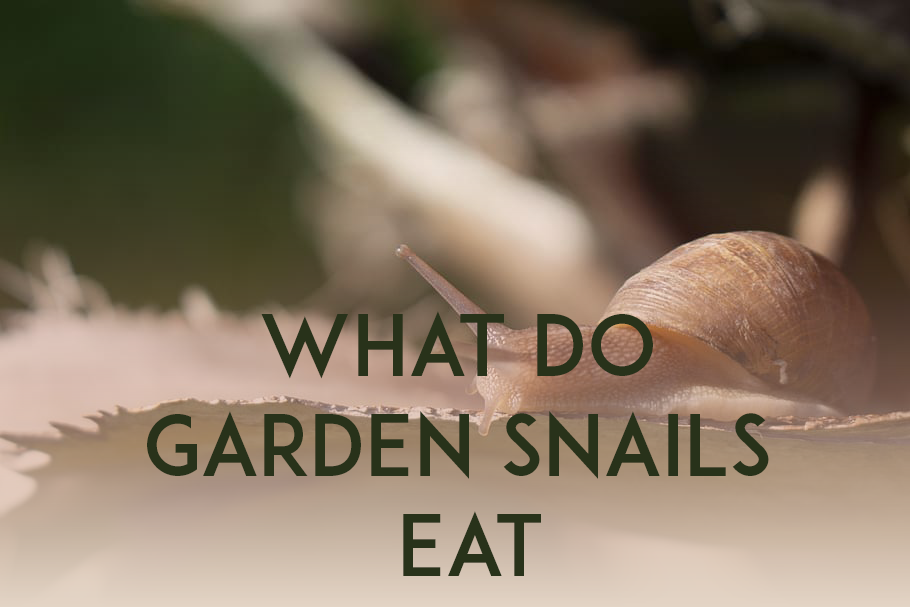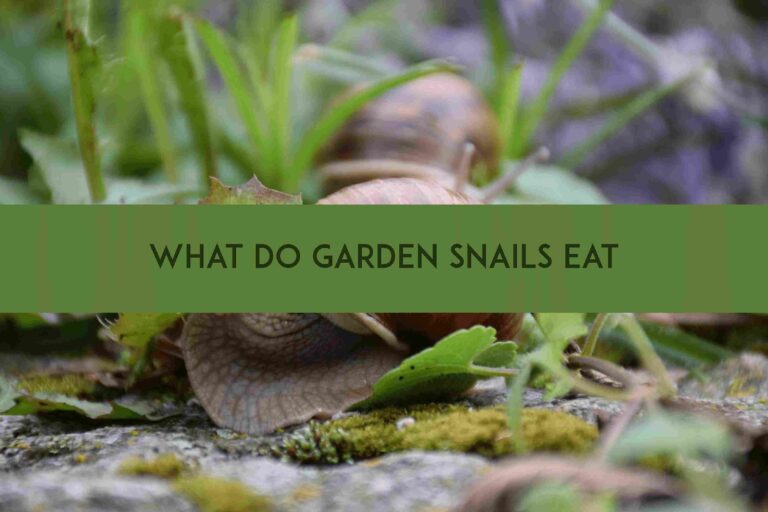Wild slugs aren’t picky eaters, and you’ll often find them in your garden beds. Some snail species are omnivorous, detritivorous, and even carnivorous. That’s right; some are predators that feed on other species or dead animal matter. In this article, you’ll learn about what garden snails eat. Snails are herbivores. They’ll eat plants, tree bark, vegetables, etc. Pet snails are similar in that they’ll eat pretty much whatever plant material they come across. Be sure to try out the different foods we suggest throughout this article to find what they like. Don’t worry if they don’t like something. They won’t eat it. You can always replace untouched food with something else they’ll enjoy eating.
What Do Garden Snails Eat in Captivity?
It’s easy to find food that your garden snail will eat. Slugs enjoy many fruits, vegetables, grass, plants, and whatever else you can find in your refrigerator or garden. Whatever you do, make sure you thoroughly wash the food before putting it in their tank. A good rinse with clean water will remove potentially harmful pesticides. It’s also essential to remove rotten scraps and add more food every few days. Keeping fresh fruit and vegetables in the tank will prevent mold growth.
Feeding in Snail Homes
When feeding your snail pet, you can ensure they eat by creating a comfortable environment. Keep the following tips in mind when building the perfect snail terrarium:
- Keep them out of direct sunlight.
- Add sticks, leaves, bark, and/or plants to mimic their natural habitat.
- Add a few inches of chemical-free soil and keep it moist (more on that later).
- Create hiding spots via structures like tiny hollowed-out logs.
- Ensure enough air gets into their tank.
What Is Snail’s Favorite Food?

You can find snails enjoying plants, fruits, and other foods. They all have different taste buds, so it can take a few weeks to get a feel for their favorites.
Lettuce:
Lettuce is a delicious, crunchy snack for your terrestrial snail. It also provides them with plenty of hydration.
Beer:
Beer might seem odd, but snails love the yeast it provides. Tiny drops every once in a while are tasty. However, too much can be lethal, so it’s essential to stick to just a few droplets.
Fruits:
When cleaning out your refrigerator, remember that your pet will probably like fruit such as:
- Strawberries
- Bananas
- Apples
- Pears
- Avocados
- Mangos
- Peaches
Vegetables:
These tiny animals are fond of vegetables. You shouldn’t have a problem getting them to eat:
- Broccoli
- Cauliflower
- Cucumbers
- Potatoes
- Spinach
- Cabbage
- Mushrooms
- Peppers
If you feed them “hard” vegetables like potatoes and carrots, consider softening them via boiling. Just make sure to let the food cool down completely before putting it in the tank.
Seeds:
Seeds are another big hit. Popular options include sunflower seeds, hemp seeds, and pumpkin seeds. It’s best to crush, grind, or soak them before serving.
Pet Food:
Offering tortoise or dog food is also standard practice. You should soak it before placing it in the terrarium.
Raw Meat:
Carnivorous snails eat raw meat like steak, mince, and chicken. Refrain from giving them any meat with seasoning on it. They’ll also eat raw eggs, cooked eggs, and eggshells.
Snails Eat Grass
Rarely do snails consume grass. When they do, they like newly grown grass across an established yard and prefer freshly sown grass. The silica content of mature grass makes it difficult for snails to eat and crawl, and grass lacks many nutrients that snails require.
Snails Eat Fungus And Algae
Snails consume fungi, such as fungus, yeast, mushrooms, and algae. Snails eat fungal sputters on branches, fungi and algae on stones and walls, whatever is growing on rotting garbage, and any fungus developing in a bathroom or other moist places of a house when they locate it.
Foods to Protect Snail Shells:
Snails only get one shell. To keep their exterior in good shape, they must have access to plenty of calcium.
Calcium is available in leafy green plants like broccoli, kale, and Brussels sprouts. However, you might also want to get calcium supplements at a pet store. Also, don’t be afraid to add a cuttlefish bone or eggshell to their tank. The snail’s mouth has radula scrapes to file away at these calcium-rich foods. While a lack of calcium can prevent snails from growing and repairing their shell, it’s essential not to give them too much of this mineral. Excessive calcium can lead to harmful internal stones. The recommended amount of calcium for snails is around 20% of their diet.
Foods to Avoid:
Land snails aren’t picky, but that doesn’t mean you should feed them anything and everything.
Foods that can harm snails include;
- Excessively salty foods
- Pasta
- Rice
- Anything contaminated by pesticides or harmful chemicals.
Do Garden Snails Drink Water?

Now that you’re familiar with the different eating habits of land snails, you might be wondering if these snails drink water. Snails are curious creatures that don’t necessarily need a water dish. They get much of the hydration they need from the foods you give them. Snails also get moisture from the soil in their tank. You should use a spray bottle twice daily to keep the environment damp. While a water bowl isn’t necessary, these snails will appreciate it. They’ll not only drink from it but also use it to take baths. If you choose to add a bowl, make sure it’s shallow to prevent your snails from drowning. It should also be somewhat heavy as snails may tip it over in the soil.
Do Carnivorous Snails Eat Other Snails?
Seeing as some species are carnivorous, your pet snail might try eating its tank mates. This shouldn’t happen if you keep different species in separate tanks.
Conclusion:
Your snail is like a family member, and they deserve to eat well! So, what do garden snails eat? They can consume various plants and fruits, and veggies — just make sure they get lots of calcium.
Apart from this if you are interested to know about Cleric Subclasses 5e then visit our Daily Bites category.
FAQs
They enjoy many fruits, including apples, blackberries, kiwis, peaches, pears, plums, raspberries, and strawberries. Also, offer vegetables like cucumber, tomato, a baby carrot cut in half lengthwise, lettuce, cabbage, kale, or dandelion leaves.
It is usually no more than 1.3 inches in length, and it has a soft body, yellow or cream-colored shells with brown spiral stripes, and is covered with mucus.
Snails thrive happily alone or in small groups, and are not territorial over space or food.
